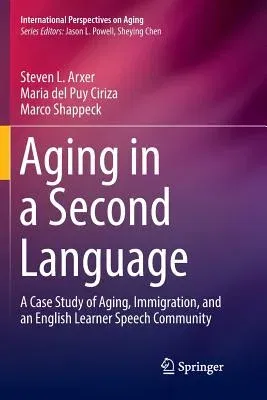Steven L Arxer
(Author)Aging in a Second Language: A Case Study of Aging, Immigration, and an English Learner Speech Community (Softcover Reprint of the Original 1st 2017)Paperback - Softcover Reprint of the Original 1st 2017, 2 August 2018

Qty
1
Turbo
Ships in 2 - 3 days
In Stock
Free Delivery
Cash on Delivery
15 Days
Free Returns
Secure Checkout
Part of Series
International Perspectives on Aging
Print Length
154 pages
Language
English
Publisher
Springer
Date Published
2 Aug 2018
ISBN-10
3319862065
ISBN-13
9783319862064
Description
Product Details
Book Edition:
Softcover Reprint of the Original 1st 2017
Book Format:
Paperback
Country of Origin:
NL
Date Published:
2 August 2018
Dimensions:
23.39 x
15.6 x
0.89 cm
ISBN-10:
3319862065
ISBN-13:
9783319862064
Language:
English
Location:
Cham
Pages:
154
Publisher:
Weight:
240.4 gm

